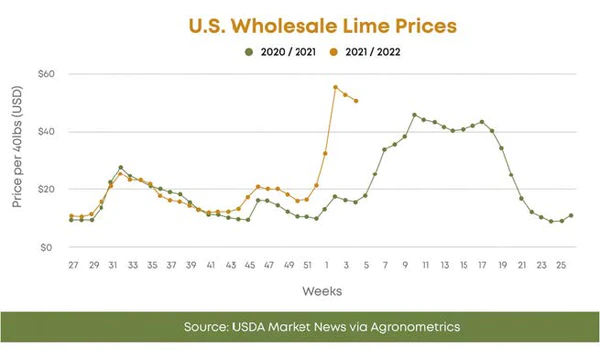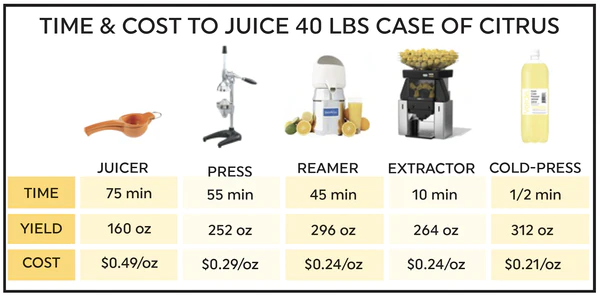The True Costs of On-Premise Juicing
Break It Down For Me
Restaurant menu price inflation is the highest it has been for 40 years. Producer prices for food are up 13% over the past year, according to federal data. And wage rates are up 10% over the past year as operators increase pay to lure more workers to meet demand amid a labor shortage. This all means restaurants face shrinking profit margins or price hikes. The search for increased profitability means looking for savings everywhere, including the hidden costs associated with in-house juicing programs.
Labor
Labor shortage combined with rising minimum wages are impacting foodservice establishments with labor inflation that is nearly double other industries, according to the Bureau of Labor Statistics. The average hourly wage for bartenders is $15.64. With payroll taxes, the cost of worker comp and unemployment insurance, benefits, and company overhead are factored in, the true labor cost is about $20/hour.
We provide you with a zero-labor alternative for fresh citrus juice.
Storage
Refrigerated storage space is always limited in any bar or restaurant. It takes more than three times the refrigerated storage space to store 100 lbs of whole citrus fruit than it does one case of juice. Proper inventory management means checking for freshness and constantly rotating products. Broadline distributors are increasing their minimums for free delivery, which means operators are trying to bulk up their ordering for fewer delivery days each week.
We provide you with fresh juice that lasts 4x longer than flash pasteurized juice and takes 1/3 of the storage space of fresh fruit.
Fruit Prices
Monitoring your bar or restaurant’s profitability is hard enough without having to constantly adjust menu pricing to reflect food inflation. Citrus juices are an essential part of every bar program, but citrus fruits, are some of the most volatile produce prices. In March 2022 alone, the price of fresh limes jumped 26% over the prior month to $110/case.
We chase the best fruit prices all year round for you so you can always count on consistent pricing and quality.

Yield
Fruit changes all year round, meaning a case of fresh limes one week might yield 2 gallons of juice, but only 1.5 gallons of juice the next week with greater effort. How you juice also matters. Hand-squeezing yields only 25-30% juice, while the average automatic juicer yields 40% juice and a lot of parts to clean up.
We make sure you get every drop of juice you pay for, every time.
Waste
A hidden cost of in-house juicing is citrus waste. If you juice 100 lbs of citrus fruits to yield 5 gallons of juice, you will be left with nearly 60 lbs of citrus waste. That is a heavy waste bin that will probably be hauled to the back trash area and hoisted by an employee to shoulder height into a trash dumpster. In addition to labor hours, the company bears a higher risk of workplace injury.
We reduce your risk and expense by reducing your waste to 12 fully recyclable empty plastic bottles.
“Making the switch to All the Things juices and mixers increased our staff’s job satisfaction and reduced supply chain cost variability significantly. It gives our team the ability to focus on the overall customer experience and flavor creativity.“
– Jeremy Kinter, Director of Operations Tractor Brewing Company


